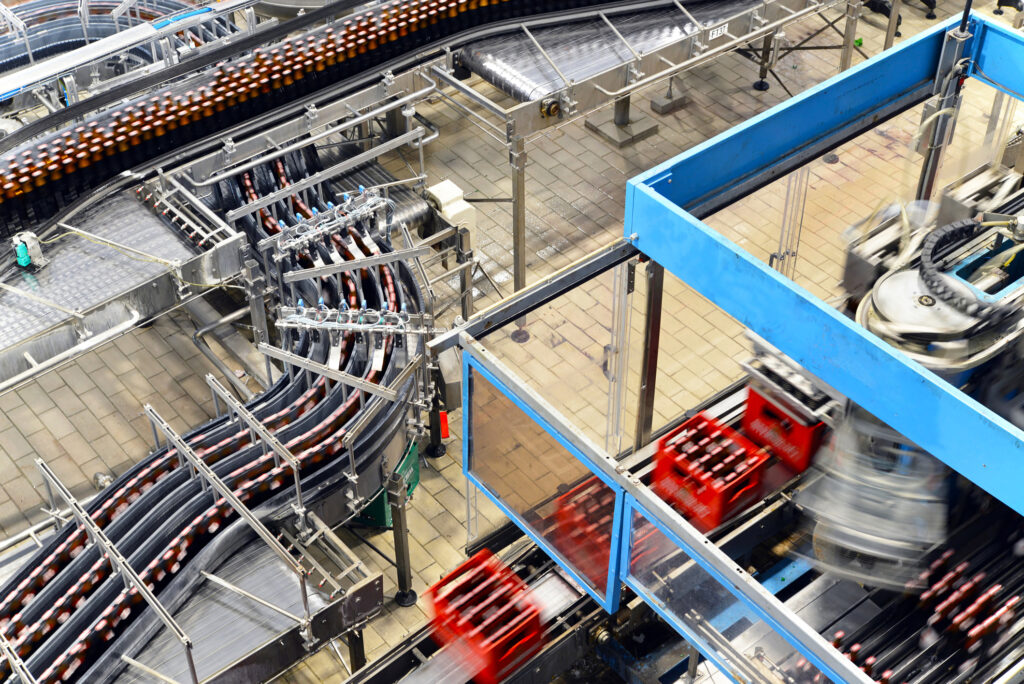Table of Contents
Conveyor maintenance is a critical aspect of ensuring the smooth operation and longevity of conveyor systems. At Lafayette Engineering, we understand the importance of keeping your conveyors in top shape to avoid unexpected downtime and costly repairs. In this comprehensive guide, we will delve into the best practices for conveyor maintenance, helping you maximize efficiency and productivity.
1. Regular Inspection and Monitoring
Routine inspections are the cornerstone of effective conveyor maintenance. Regularly check for signs of wear and tear, misalignment, and any unusual noises. Early detection of potential issues can prevent minor problems from escalating into major breakdowns.
2. Lubrication is Key
Proper lubrication is essential to reduce friction and wear on moving parts. Ensure that all bearings, rollers, and chains are adequately lubricated according to the manufacturer’s recommendations. Over-lubrication can be just as harmful as under-lubrication, so follow the guidelines precisely.
3. Cleanliness Matters
Keeping your conveyor system clean is vital for its optimal performance. Accumulated debris, dust, and spilled materials can hinder the system’s efficiency and cause unnecessary strain on the components. Implement a regular cleaning schedule to prevent build-up and ensure smooth operation.
4. Align and Adjust
Misalignment of conveyor belts can lead to uneven wear and potential system failures. Regularly check and adjust the alignment of the belts, pulleys, and rollers to ensure they are running parallel and true. Proper alignment reduces stress on the system and extends its lifespan.

5. Tension and Tracking
Maintaining the correct tension and tracking of conveyor belts is crucial. Too much tension can cause excessive wear on the belt and components, while too little tension can lead to slippage and reduced efficiency. Regularly check and adjust the tension to keep the belt running smoothly.
6. Replace Worn Parts Promptly
Worn-out parts can compromise the efficiency and safety of your conveyor system. Promptly replace any damaged or worn components, such as belts, rollers, and bearings. Using genuine parts from reputable suppliers ensures compatibility and reliability.
7. Implement a Preventive Maintenance Program
A well-structured preventive maintenance program can significantly reduce downtime and extend the life of your conveyor system. Schedule regular maintenance tasks, such as inspections, lubrication, and part replacements, to keep the system in peak condition.
8. Employee Training
Properly trained employees are essential for effective conveyor maintenance. Ensure that your team is knowledgeable about the maintenance procedures and safety protocols. Regular training sessions can help them identify and address issues before they become critical.
9. Monitor Electrical Components
Electrical components, such as motors, sensors, and controls, play a crucial role in the operation of conveyor systems. Regularly inspect and test these components to ensure they are functioning correctly. Address any electrical issues promptly to avoid system failures.
10. Keep Detailed Records
Maintaining detailed records of all maintenance activities is essential for tracking the performance and history of your conveyor system. These records can help identify recurring issues, plan future maintenance, and ensure compliance with safety regulations.
Frequently Asked Questions (FAQs)
Q1: Why is regular conveyor maintenance important? A: Regular maintenance helps identify potential issues early, preventing costly breakdowns and ensuring the efficient operation of the conveyor system.
Q2: How often should conveyor belts be inspected? A: Conveyor belts should be inspected at least once a month. However, the frequency may vary depending on the usage and operating conditions.
Q3: What are the signs of a misaligned conveyor belt? A: Signs of misalignment include uneven wear on the belt, unusual noises, and the belt drifting to one side. Regular alignment checks can prevent these issues.
Q4: Can over-lubrication harm the conveyor system? A: Yes, over-lubrication can attract dust and debris, leading to increased wear and potential system failures. Follow the manufacturer’s lubrication guidelines.
Q5: What should be included in a preventive maintenance program? A: A preventive maintenance program should include regular inspections, lubrication, part replacements, and detailed record-keeping to ensure the system’s longevity.
Q6: How can employee training improve conveyor maintenance? A: Properly trained employees can identify and address maintenance issues promptly, reducing downtime and enhancing the system’s efficiency.
Q7: What role do electrical components play in conveyor maintenance? A: Electrical components are crucial for the operation of the conveyor system. Regular inspections and testing can prevent electrical failures and ensure smooth operation.
Q8: Why is it important to use genuine parts for replacements? A: Genuine parts ensure compatibility and reliability, reducing the risk of system failures and extending the lifespan of the conveyor system.
Q9: How can cleanliness impact conveyor maintenance? A: Keeping the conveyor system clean prevents debris build-up, reduces wear on components, and ensures optimal performance.
Q10: What benefits do detailed maintenance records provide? A: Detailed records help track the system’s performance, identify recurring issues, and plan future maintenance tasks effectively.
At Lafayette Engineering, we offer comprehensive conveyor maintenance services tailored to meet your specific needs. Our team of experts is dedicated to ensuring your conveyor systems operate at peak efficiency. Visit our website and connect with us on LinkedIn to learn more about how we can assist you with all your conveyor maintenance needs.
By following these essential tips and implementing a proactive maintenance strategy, you can significantly enhance the performance and longevity of your conveyor systems. Regular maintenance not only reduces downtime but also ensures a safer and more efficient operation, contributing to the overall success of your business.



